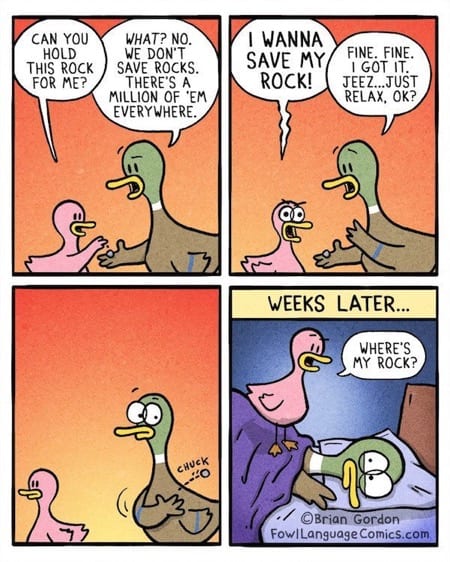Funtabulously Frivolous Friday Five 289
Many of my quizzes to date have been based upon themes such as ‘famous children in medicine’; ‘medical colours’; or ‘the power of language’. This week’s theme is somewhat less elegant, introducing the Funtabulously Frivolous Friday Five 289 aka “shit my kids have done”
Question 1
Child one, with uncharacteristic generosity, offers child two a bite of her cracker. Child two bites vigorously into said cracker and accidentally creates a penetrating injury through child one’s middle fingernail. Thus, creating a nail bed injury from human bite.
How many species of bacteria could predictably inhabit child two’s mouth, 10, 50 or 100?
Reveal the funtabulous answer
50
Human saliva is known to contain as many as 50 species of bacteria with almost 108 microbes/ml. Thankfully, bite wounds inflicted by children are known to have lower rates of infection owing to less diseased teeth or a lower incidence of gingivitis in children as compared with adults.
The most common aerobic isolates from human bites are Streptococcus, Staphylococcus and Eikenella species. Streptococcus anginosus was the most common pathogen isolated and was found to contaminate 52% of human bites. The most common anaerobic pathogens were Prevotella and Fusobacterium species. Isolated cases of transmission of viral hepatitis, herpes virus, tetanus, Actinomyces and Treponema pallidum through human bites have been reported.
Thankfully I’m fairly sure child two is neither rabid nor hepatitic.
Reference:
- Patil DP et al. Managing human bites. J Emerg Trauma Shock. 2009;2(3):186-190
Question 2
Boy child, as a 12 month old, takes a dive off the kitchen bench, headfirst, onto a wooden floor whilst being ineffectually ‘supervised’ by his father (yours truly). Thankfully, he suffers neither loss of consciousness, vomiting post event, or abnormal behaviours (bar a rollickingly good scream).
Had he developed ongoing vomiting after the event, in the absence of any other neurological features or obvious trauma, what are the chances of him requiring a CT Brain or having a traumatic brain injury?
Reveal the funtabulous answer
Less than 0.5%
A 2018 study in Pediatrics looked at 19,920 children who experienced head injury. Of those, 3389 (17.0%) had vomiting. In 172 patients with clinically important traumatic brain injury (ciTBI), 76 had vomiting (44.2%); and in 285 with traumatic brain injury on CT (TBI-CT), 123 had vomiting (43.2%).
With isolated vomiting, only 1 (0.3%) had ciTBI and 2 (0.6%) had TBI-CT.
Importantly, predictors of increased risk of ciTBI with vomiting were:
- signs of skull fracture (OR 80.1)
- altered mental status (OR 2.4),
- headache (OR 2.3)
- acting abnormally (OR 1.86)
Reference:
- Borland ML et al. Vomiting With Head Trauma and Risk of Traumatic Brain Injury. Pediatrics. 2018;141(4) pii: e20173123. doi: 10.1542/peds.2017-3123.
Question 3
Someone (not me) feeds a 14 month old girl child a peanut. Girl child plays with toy, jams finger (different finger from Q1) in toy, screams, and promptly aspirates peanut fragment.
Which facet of an assessment of a child with an aspirated foreign has the greatest predictive value?
- Cough
- Choking
- Wheezing
Reveal the funtabulous answer
Cough
In this case, girl child coughed relentlessly for 40 minutes after the aspiration, Dad made up his mind that he now had to take girl child in to meet a bronchoscope at about the 10 minute mark. On a quick auscultation prior to packing up the car, asymmetric air entry was also noted (bugger).
In a 2016 study of 102 patients, 62% were male, mean age was 3.3 years. A foreign body was identified on endoscopy in 69 cases (68%). The most common presenting symptoms were cough (88%), choking/gagging (67%), and wheezing (57%). Decreased breath sounds and wheezing on examination were independently associated with increased odds of foreign body. The most common abnormal radiographic finding was air trapping (33%).
Reference:
- Sink JR et al. Predictors of Foreign Body Aspiration in Children. Otolaryngologists Head Neck Surgery. 2016;155(3):501-7
Question 4
Girl child, as a 9month old, developed fevers >39 degrees for three days. The fevers defervesce on day 4 and she develops a rash that looks very similar to this:
Okay, no points for guessing that she has Roseola infantum. Question… what is the most common complication affecting children with Roseola?
Reveal the funtabulous answer
Febrile convulsions.
Most children recover from roseola infantum without sequelae however febrile convulsions are the most frequent complication. Seizures occur during the febrile period in approximately 10–15% of primary HHV‐6B infections, which account for approximately one‐third of all febrile seizures in children under age 2.
Reference:
- Kidshealth.org – Roseola
Question 5
Girl child was noted early on to have reasonably blue sclera around her beautiful hazel irises.
Which disease is most commonly associated with blue sclera?
Reveal the funtabulous answer
Osteogenesis imperfecta.
Although 66 genetic syndromes have been associated with blue/grey discolouration to the sclera, only Osteogenesis imperfecta Type 1 regards blue sclera as a consistent extra-skeletal manifestation.
Osteogenesis imperfecta is still considered a rare metabolic bone disorder that affects approximately 1/13,500–15,000 births. In the modern era of advanced genetic studies, the term osteogenesis imperfecta is used as an umbrella to include various quantitative and qualitative defects of type 1 collagen and impaired bone strength.
There are several extra-skeletal manifestations aside from the blue/gray sclera such as dentinogenesis imperfecta, joint hypermobility, abnormal callus formation, hearing impairment, cardiovascular and CNS complications.
Reference:
- Brooks JK. A review of syndromes associated with blue sclera, with inclusion of malformations of the head and neck. Oral Surgery Oral Med Pathol Oral Radiology. 2018;126(3):252-263
…and finally

FFFF
Funtabulously Frivolous Friday Five
Dr Mark Corden BSc, MBBS, FRACP. Paediatric Emergency Physician working in Northern Hospital, Melbourne. Loves medical history and trivia...and assumes everyone around him feels the same...| LinkedIn |


